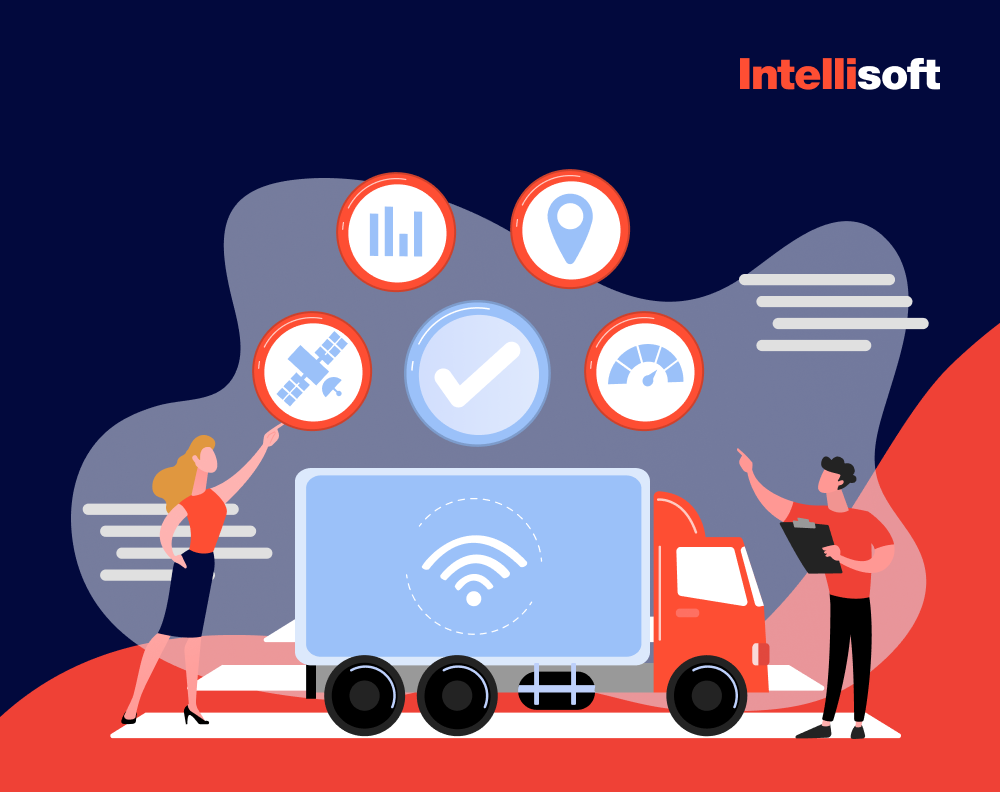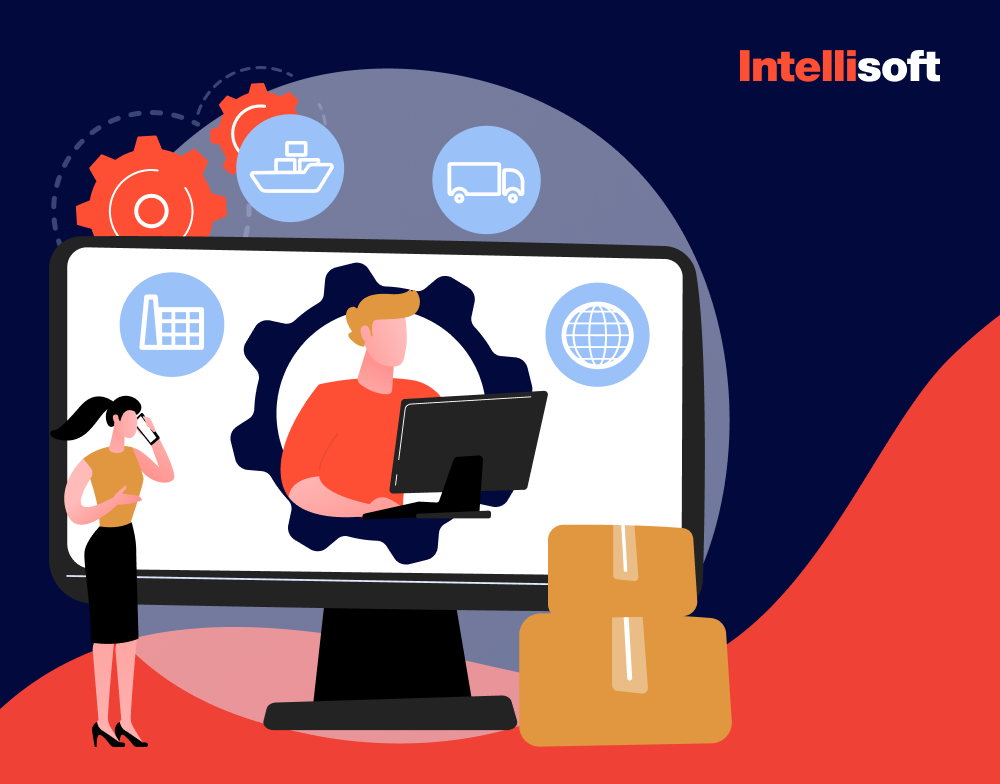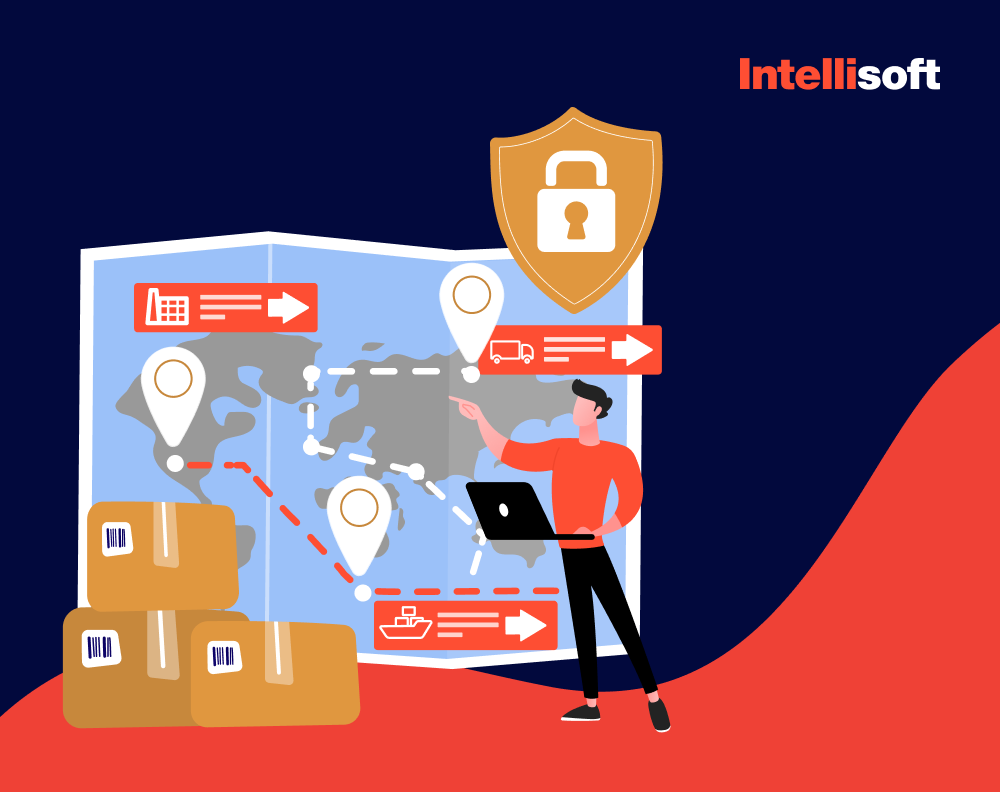Recent statistics reveal that a meager 7% of carriers that undergo DOT compliance audits can pass them without any violations. This alarming figure signifies the need for companies to ensure they are a part of the fortunate 7%.
Failing to comply with DOT requirements can result in substantial fines and safety hazards, making it crucial to understand how to maintain compliance and improve fleet safety. To help you achieve these goals, we have compiled a comprehensive guide on DOT compliance that includes all the necessary information and tips to help you stay on top of regulatory requirements for logistics companies.
Table of Contents
What Is DOT Compliance?
Meeting the standards set by the U.S. Department of Transportation (DOT) for the safe and efficient operation of commercial motor vehicles is called DOT compliance. It is a crucial aspect of managing a fleet, regardless of whether a private company, government agency, or rental car company owns it.
DOT regulations have been developed to ensure the safety of drivers, passengers, and other road users by setting strict guidelines for commercial motor carriers. These guidelines cover several areas, including vehicle maintenance, driver qualifications, and hours of service regulations.
Not complying with DOT regulations may result in severe consequences, such as substantial fines, suspension of a company’s authorization to operate its commercial vehicle fleet, or even criminal charges. To avoid these penalties, commercial motor carriers must regularly monitor their compliance with DOT regulations and adjust their operations appropriately as needed. The DOT also conducts regular audits to ensure commercial motor carriers comply with these regulations.
Who Must Comply with DOT?
The regulations outlined by the Department of Transportation apply to all vehicles mandated to register with the DOT and obtain a USDOT number. The scope of these regulations is primarily focused on commercial vehicles. Still, more precisely, it pertains to motor vehicles that operate based on one or more of the criteria specified by the DOT guidelines.

- Transporting hazardous materials following the Department of Transportation (DOT) regulations for type and quantity.
- A gross vehicle weight rating (GVWR) of 4,536 kg (10,001 pounds) or more, which is also applicable for a combination of vehicles.
- Transporting more than eight people for a fee (including the driver).
- Transporting a group of more than 15 people (including the driver).
- Interstate commercial vehicles require USDOT numbers. Some states also require intrastate vehicles to obtain this number. For more information, visit FMCSA’s website.
DOT Compliance Statistics
Here are some statistics about DOT compliance in trucking. In the fiscal year 2021, the Federal Motor Carrier Safety Administration (FMCSA) conducted a whopping 3 million roadside inspections of commercial motor vehicles. These inspections aimed to ensure the trucking industry’s safety and compliance. However, the results were alarming, as over 1 million CMVs were cited for violating safety regulations.
The most common violations fell into three categories:
- Hours of service (30%)
- Vehicle maintenance (25%)
- Driver qualification (20%)
In the fiscal year 2021, the average fine imposed for a citation by the Federal Motor Carrier Safety Administration (FMCSA) was $1,100. This amount signifies the seriousness of non-compliance with safety regulations. FMCSA had to revoke the operating authority of over 10,000 carriers for non-compliance with safety regulations. This statistic highlights the need for all carriers to adhere strictly to safety regulations.
These statistics indicate that DOT (Department of Transportation) compliance is a significant issue in the trucking industry. Carriers failing to comply with safety regulations are subject to costly penalties and may revoke their operating authority.
DOT Penalties and Fines
The year 2017 saw the implementation of a new and revised schedule of fines for DOT (Department of Transportation) violations by the U.S. Federal Motor Carrier Safety Administration. The updated schedule of fines brought a significant surge in the financial penalties charged to drivers or operators who were found to violate these regulations.
These fines vary in magnitude and can rapidly increase in number, as is evident from the violations and the corresponding fines levied:
- Knowing falsification of records: $12,135
- Out-of-service order: failure to cease operations: $26,126
- Violation of hazardous materials or safety authorizing regulations: $78,376
- Same, resulting in death, serious injury, or destruction of property: $182,877
The instances mentioned above are just a few of the violations that illustrate the gravity of DOT violations. The repercussions of such breaches can be severe, ranging from hefty fines to the worst-case scenario of having one’s commercial license suspended or revoked. To avoid such penalties, carriers must follow DOT regulations and adhere to them diligently.
What is Needed for DOT Compliance?
Adhering to various safety compliance initiatives to keep your fleet compliant with DOT regulations is crucial. These initiatives include ensuring that your drivers meet the necessary qualifications, following material regulations, and staying up-to-date with inspections and fleet maintenance. By following these guidelines, you can help ensure the safety of your drivers, vehicles, and cargo and avoid any potential penalties or fines for non-compliance.
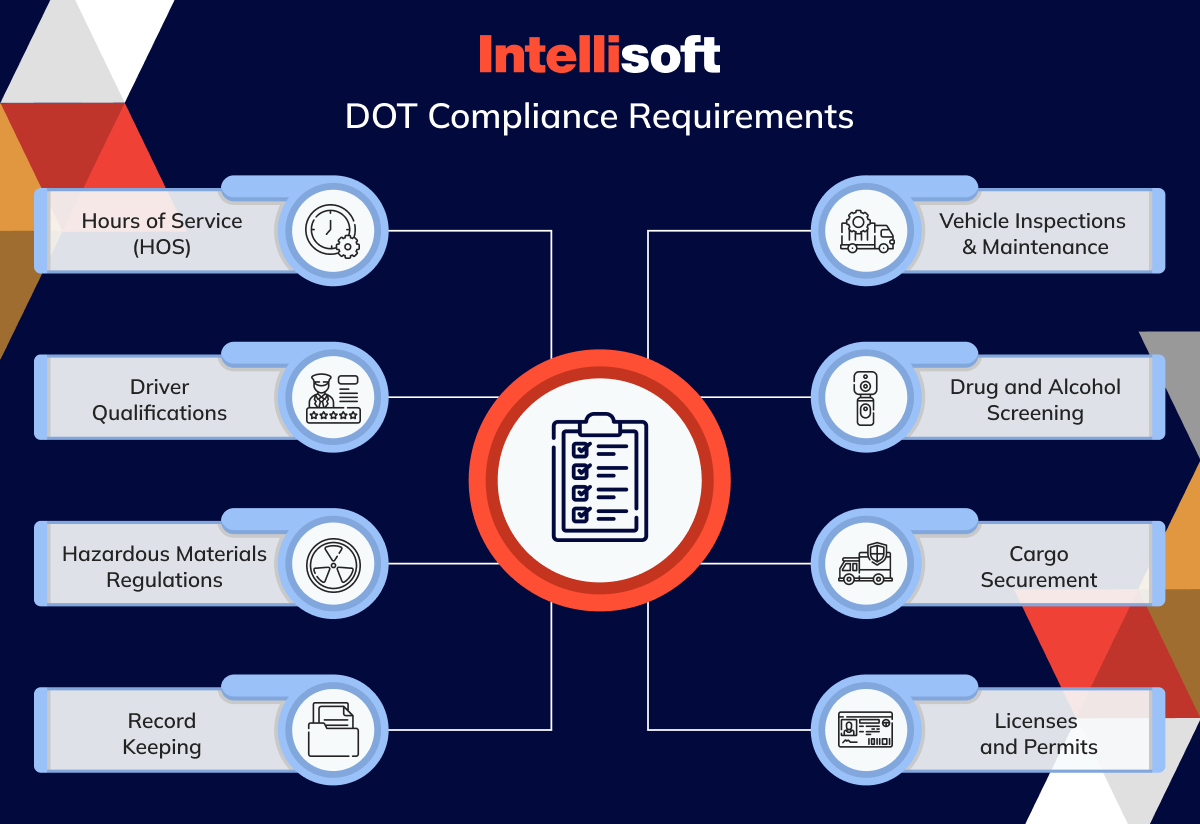
Hours of Service (HOS)
The Hours of Service (HOS) regulations are essential to ensuring commercial drivers’ well-being and promoting road safety. The primary goal of these guidelines is to prevent driver fatigue, a common cause of road accidents. To achieve this, commercial drivers must adhere to specific rules, such as taking a minimum of 30-minute breaks after driving for eight hours, avoiding hazardous driving conditions, and limiting their driving hours.
Under the electronic logging device (ELD) mandate, new regulations have been introduced and are now in effect. The ELDs are critical to these regulations as they track the Hours of Service (HOS). These devices connect to the engine to monitor and record important information such as the vehicle’s motion status, mileage, and engine hours. The Federal Motor Carrier Safety Administration (FMCSA) ensures that all ELDs used to track the HOS comply with safety standards. Therefore, commercial drivers must use approved ELDs to ensure compliance with the regulations.
Vehicle Inspections & Maintenance
Per the Department of Transportation (DOT) regulations, drivers must conduct thorough inspections of their vehicles before and after every trip. These inspections, known as Driver Vehicle Inspection Reports (DVIRs), involve a meticulous examination of the vehicle’s exterior and interior, searching for any damages or malfunctions that may pose risks during the journey.
Aside from complying with the DOT’s requirements, conducting regular maintenance inspections is crucial to extending your vehicle’s life by preventing premature wear and tear. Your fleet’s maintenance strategy should include the repair of various parts, such as brakes, lights, and tires.
Digital inspection solutions can be very helpful in this regard, as they allow you to digitize the paperwork and provide comprehensive reporting, saving you time and effort. So, ensure you stay on top of your vehicle maintenance inspections to ensure your fleet remains safe, efficient, and compliant with DOT regulations.
Driver Qualifications
When considering hiring a new driver for your business or organization, it’s important to take the necessary steps to ensure they are a safe and responsible driver. One way to do this is by conducting a pre-employment background check that includes obtaining their driving records. This check can provide valuable information on their safety record, drug history, and overall fitness as a driver.
Per Federal Motor Carrier Safety Administration (FMCSA) regulations, employers are required to conduct a comprehensive background check, including examining the driver’s previous employment, drug and alcohol testing records, and driving history. This requirement helps ensure that employers make informed decisions when hiring drivers and maintain a safe and responsible workforce.
- Accessing records of motor vehicle operations spanning the last three years.
- Exploring the safety history, encompassing records of accidents.
- Confirming records of substance abuse, such as violations involving alcohol or drugs.
- Executing a drug test before employment.
- These documents are vital for evaluating driver competency, guaranteeing that your fleet drivers adhere to safety standards.
Drug and Alcohol Screening
The Department of Transportation (DOT) mandates drug and alcohol testing for commercial drivers to ensure their safety and the safety of others on the road. Apart from the initial pre-employment drug screening, random drug testing is conducted throughout the driver’s tenure.
The tests screen for marijuana, cocaine, amphetamines, opioids, and PCP and are performed without prior notice. In addition to random tests, drivers are screened when there is reasonable suspicion of drug or alcohol use and as a follow-up to incidents, if necessary. These measures help to ensure that drivers are alert, responsive, and fit to drive without any impairment.
Hazardous Materials Regulations
The transportation of hazardous materials is a matter of utmost concern and requires strict adherence to safety measures to prevent harm to the environment and individuals. The Department of Transportation (DOT) has established comprehensive guidelines to ensure drivers who transport hazardous waste and pollutants receive adequate training to handle these materials safely. The guidelines outline the necessary precautions that must be taken during transport to avoid accidents and prevent penalties.
One of the most crucial aspects of ensuring the safe transportation of hazardous materials is the proper classification, description, and packaging of these materials. Hazardous materials are classified based on their properties, such as flammability, reactivity, and toxicity. This information is used to determine the appropriate packaging and labeling requirements for each type of material.
Proper labeling and packaging are essential to ensure that hazardous materials are transported safely and comply with the regulations. Labels must accurately identify the contents of the package and indicate any special handling requirements. Packaging must be designed to prevent leaks or spills during transport and must withstand the conditions of the journey.
Cargo Securement
Cargo securement is a crucial aspect of road safety that involves complying with strict regulations around tie-downs and front-end structures. This approach includes securely latching tailgates, doors, spare tires, and fastening wedges to prevent movement while transporting cargo.
Moreover, cargo securement also involves adhering to specific specifications regarding obscuring front and side views to ensure the safe transportation of the cargo.
Record Keeping
You must maintain and file driver records correctly to comply with DOT regulations. While there are multiple documents you need to keep for yearly reporting or if you are audited, the records include:
- Proof of insurance
- Vehicle inspections
- Driver qualifications
- Drug and alcohol screening
- Hours of Service
- Incidents
- Driver training
Managing paperwork can be daunting, especially when you need to provide proof in real time. However, with the help of digital record-keeping solutions, managing and accessing records becomes much more straightforward. Implementing digital inspection solutions for Driver Vehicle Inspection Reports (DVIRs) and compliance reporting can significantly improve the accuracy and speed of the process. This approach can lead to increased efficiency and safety for your entire fleet.
Licenses and Permits
It’s important to be aware of the licenses and permits required to comply with DOT regulations. Although the specific requirements may vary depending on the state you operate in, it’s common to be required to obtain a USDOT number and MC number.
In addition to these, you may also need to obtain other licenses and permits, such as commercial driver’s licenses (CDLs), motor carrier authority numbers, unified carrier registrations, and standard carrier codes. Knowing all the necessary regulations to operate your business safely and comply with applicable laws is important.
Related articles:
- Logistics Management System Development: Timeframe, Tech Stack, and Costs
- How Predictive Analytics Tools Are Benefitting Supply Chain
- Fuel Management System: A Step-by-Step Development Guide
- What Is a Modern Fleet Information Management System?
- Machine Learning in Logistics Industry: Benefits and Use Cases
What Is DOT Compliance Management Software?
Numerous fleets rely on DOT compliance management software to ensure adherence to the Department of Transportation (DOT) regulations, such as the Hours of Service (HOS) requirements and fleet maintenance standards. This software, also known as ELD compliance software, incorporates an electronic logging device (ELD) that captures data on vehicle speed, location, and diagnostic information.
This data is then transmitted through the cloud to a central dashboard, which can be monitored and analyzed for compliance. By utilizing the DOT compliance service, fleets can better manage their compliance with regulations and minimize the risk of violations, penalties, and other associated costs.
Key features to look for in a DOT compliance management system
It is important to have a complete fleet management software system that meets your business needs to ensure regulatory adherence and streamline operations. While DOT (Department of Transportation) compliance management software can help your business stay compliant during an audit, selecting a system with key features is crucial. Considering the following DOT compliance services, you can select a DOT compliance management system to help your business stay compliant and efficient.
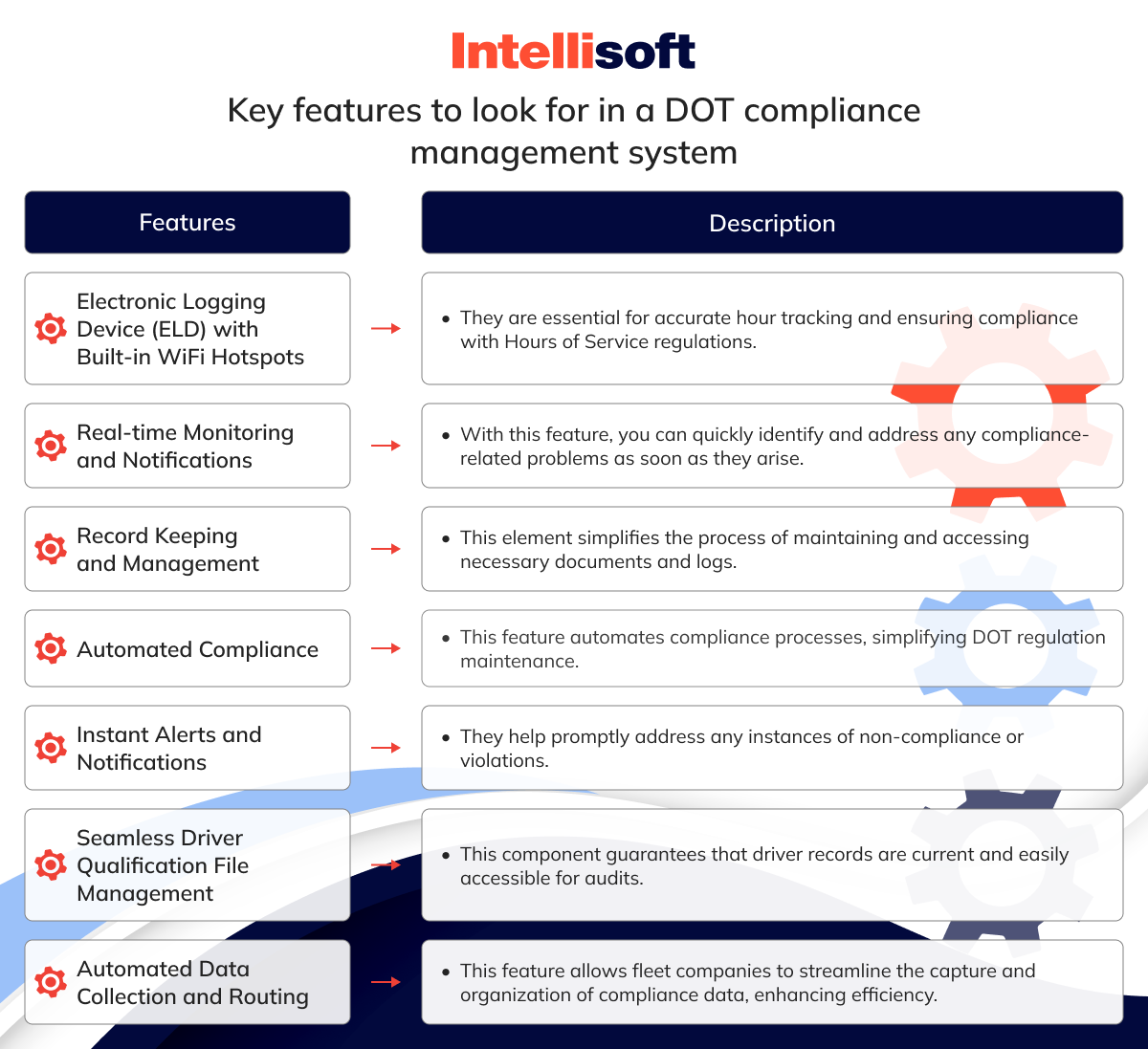
- Electronic Logging Device (ELD) with Built-in WiFi Hotspots. They are essential for accurate hour tracking and ensuring compliance with Hours of Service regulations.
- Real-time Monitoring and Notifications. With this feature, you can quickly identify and address any compliance-related problems as soon as they arise.
- Record Keeping and Management. This element simplifies the process of maintaining and accessing necessary documents and logs.
- Automated Compliance. This feature automates compliance processes, simplifying DOT regulation maintenance.
- Instant Alerts and Notifications. They help promptly address any instances of non-compliance or violations.
- Seamless Driver Qualification File Management. This component guarantees that driver records are current and easily accessible for audits.
- Automated Data Collection and Routing. This feature allows fleet companies to streamline the capture and organization of compliance data, enhancing efficiency.
Top DOT Compliance Software of 2024
The Department of Transportation possesses the power to perform unannounced inspections on businesses operating vehicles without prior notice. These companies must adhere to DOT standards to prevent fines and maintain uninterrupted operations. DOT compliance software is designed to help companies comply with DOT regulations, minimize risks, and pass DOT audits without issues. If you’re looking for the best DOT compliance software, here’s a list of some top-rated options to choose from:
SafetyCulture
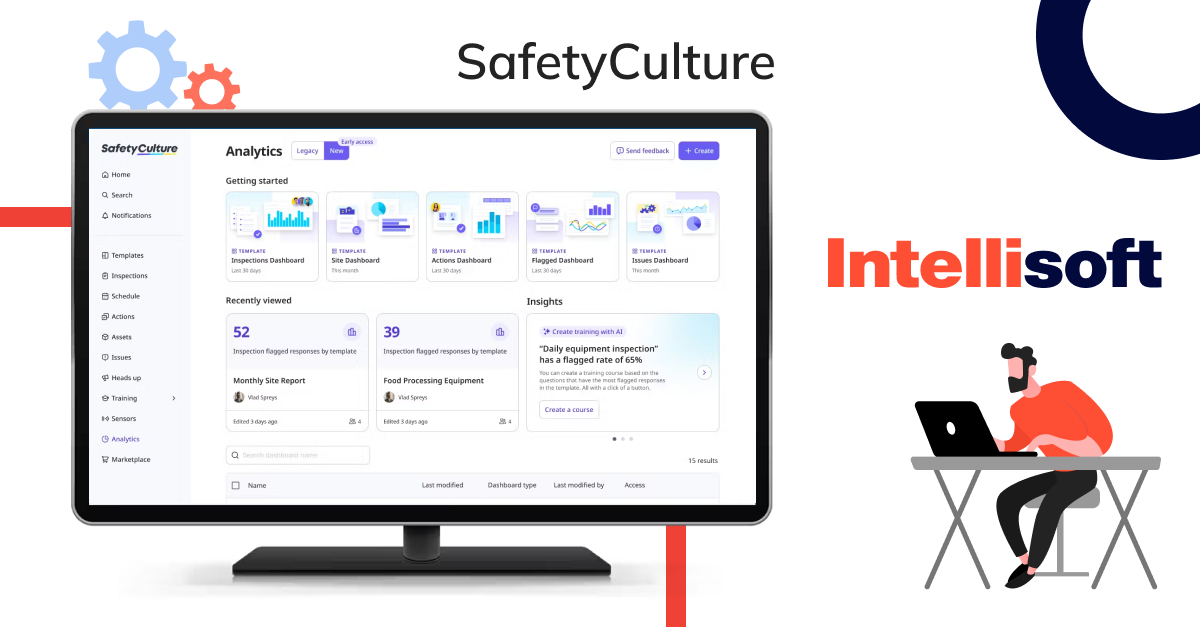
SafetyCulture is an exceptional mobile-first platform that offers excellent versatility, making it an ideal choice for fleet operations safety. It is a top-rated DOT compliance software that enables companies to comply with the US Department of Transportation regulations.
The platform simplifies completing inspection checklists and maintaining records of safety incidents, all of which can be done using a mobile device, even if offline. This comprehensive solution enables companies to streamline these tasks, ensuring that they are always prepared for external audits and operate according to the rules and regulations set by the DOT.
The main features of this software include the following:
- Organizing Important Documents In One Place. This method simplifies the process for compliance groups to compile reports using driver licenses, vehicle registrations, and drug and alcohol test outcomes and to distribute these reports to regulatory agencies.
- Tracking and Managing Fleet Assets. This functionality allows for the surveillance, oversight, and administration of vehicles and additional apparatus within the fleet through the establishment of digital portfolios. These portfolios encompass details on registration, insurance data, and records of maintenance.
- Facilitating Compliance and Maintenance Processes. Thanks to this option, managers can streamline DOT safety audits, pre-trip inspections, vehicle maintenance, and driver onboarding using digital checklists from the public library.
- Managing Safety Incidents Effectively. This feature helps to manage safety incidents promptly by generating comprehensive reports with photo and video documentation. The collected data can then be analyzed to improve current safety protocols.
- Enhancing Driver Training and Certifications. It enhances driver skills and ensures their current certifications by providing specialized training programs.
TivaCloud

TivaCloud is a comprehensive DOT compliance service solution designed to assist transport and logistics companies manage their daily operations effectively. One of its key functionalities is ensuring compliance with DOT regulations, which it achieves by streamlining various tasks. These include managing driver qualification files, monitoring service hours, and conducting vehicle inspections with ease.
TivaCloud offers several essential features, making it a valuable tool for transport and logistics companies.
- The Driver Qualification File Management. This feature allows companies to easily maintain detailed records of their drivers’ qualifications, certifications, and training.
- The Vehicle Inspection and Maintenance Records. It enables companies to keep track of their vehicles’ maintenance schedules, inspection reports, and repair records, ensuring that they are always in good condition and compliant with safety standards.
- Compliance Alerts and Notifications. TivaCloud also helps to keep companies informed of any potential compliance issues. This approach ensures that the company is always up-to-date with the latest regulations and can take necessary action to avoid penalties or fines.
Fleet Complete

Fleet Complete is an all-encompassing DOT driver compliance software that offers many tools to optimize fleet operations. The solution automates various tasks such as scheduling, reporting, and communication, saving the company valuable time and resources. One of the most significant benefits of Fleet Complete is its ability to digitize record keeping, ensuring compliance with local and federal regulations.
The solution offers a range of features, including:
- GPS Fleet Tracking and Location Monitoring. It allows companies to keep track of their vehicles’ whereabouts in real-time.
- Driver Behavior Monitoring and Coaching. This Fleet Complete’s option helps improve driver safety and efficiency, leading to a reduction in accidents and fuel consumption.
- Electronic Logging Devices (ELDs). This feature helps companies comply with Hours of Service (HOS) regulations.
FleetWave

Chevin’s FleetWave is a highly trusted platform that caters to a diverse range of customers, including government agencies, utilities, and transportation businesses. The platform offers various tools and features that help these companies monitor and manage their workflows effectively, ensuring compliance with DOT regulations and minimizing the risk of violations and penalties.
FleetWave offers three prominent features:
- Vehicle Maintenance Management. This module enables companies to keep track of their fleet’s maintenance needs and schedules, ensuring that their vehicles are always in optimal condition.
- Driver Safety and Compliance Monitoring. It allows companies to monitor their drivers’ behavior, detect unsafe driving practices, and take appropriate action to prevent accidents and violations.
- Electronic Driver Logs and Hours of Service Tracking. This feature helps companies to keep track of their drivers’ hours of service, ensuring that they comply with DOT regulations and avoid any penalties or fines.
Fleetpal

Fleetpal is a comprehensive DOT compliance management software that offers a wide range of features to help companies comply with DOT regulations. It comes with user-friendly tools that make it easy for managers to keep track of driver certifications, vehicle inspections, and other regulatory documentation without any hassle.
As for notable features, here are the most important of them:
- Driver Qualification File Management. This feature enables managers to monitor driver qualifications and ensure they meet regulatory requirements.
- Vehicle Inspection and Maintenance Tracking. With this option, fleet companies can schedule and track maintenance tasks to ensure their vehicles are always in good condition.
- Electronic Document Storage and Retrieval. Fleetpal allows managers to store all their regulatory documents in one place and access them quickly when needed.
FleetUp

FleetUp is an award-winning DOT compliance management software for trucking and delivery services. It provides proactive monitoring of driver behavior and vehicle maintenance, considerably reducing the likelihood of accidents and injuries. With FleetUp, companies can automate their reporting and prepare all compliance-related documents (such as HOS, DVIR, and IFTA) as per the DOT’s requirements.
This software provides three crucial features:
- Electronic Logging Device (ELD) Compliance. FleetUp’s ELD compliance feature simplifies the logging process, accurately recording driving hours, vehicle engine hours, and miles driven. This approach facilitates compliance with federal regulations and reduces administrative burden.
- Hours of Service (HOS) Tracking and Reporting. The software tracks Hours of Service, records driving time and rest periods, and sends real-time alerts to prevent HOS violations. It optimizes scheduling, improves driver safety, and maintains legal compliance.
- Vehicle Maintenance Scheduling and Alerts. It ensures that fleet vehicles are always in good working condition.
SafeFleet

One of the most prominent DOT compliance solutions, SafeFleet has been tailor-made to cater specifically to transport companies that manage waste and recycling vehicles. However, this platform is extremely versatile and can also be used as comprehensive DOT driver compliance software. Its features are not limited to just these applications. Companies have also found it to be an effective integrated safety solution for smart city vehicles such as school buses, law enforcement, public transit, and commercial last-mile deliveries.
The SafeFleet platform offers a range of features that make it an excellent choice for these applications.
- Video and Photo Capture with Storage. This option makes it easier to monitor vehicles and ensure compliance.
- Vehicle Upfit and Maintenance. It can help keep your fleet of vehicles in top condition.
- Live GPS Tracking with Route Optimization. With this feature, managers can optimize routes for your vehicles in real time and ensure timely and efficient deliveries.
Integrating DOT Compliance Software With IntelliSoft
Maintaining compliance with the Department of Transportation (DOT) regulations is of utmost importance for companies operating in the transportation and heavy vehicle industries. It ensures the legal operation of your business and protects the safety of your drivers and the public. However, compliance can be a complex and daunting task, especially for businesses that lack the necessary resources, so they also evaluate the DOT compliance services pricing.
This is where IntelliSoft comes in. We are a full-cycle outsourcing team of professionals with extensive knowledge and experience in DOT compliance. We can help you establish a culture of compliance within your organization, starting with accurate record-keeping. Our customized solutions are designed to ensure seamless operations and prioritize safety above all else.
From initial assessments to continuous compliance management, we offer comprehensive support to our clients. Compliance requirements can vary depending on your business type, size, and location. That’s why we tailor our DOT compliance services to meet your needs and ensure you remain compliant with all DOT regulations.
By partnering with IntelliSoft, you can rest assured that you are safe. We take immense pride in delivering high-quality services and helping our clients maintain the highest safety and compliance standards. So, if you want to ensure the safety of your drivers and the public, reach out to us today to learn more about how we can help you maintain DOT compliance.
Conclusion
Safety personnel are often too occupied to fully comply with regulations despite having the knowledge and motivation to do so.
Drivers frequently join and leave the terminal, which makes it difficult to maintain a stable workforce. Previous employers often don’t respond to inquiries, further complicating the hiring process. Safety personnel are also responsible for conducting 500 Motor Vehicle Record checks, interviewing and selecting new employees, and ensuring compliance with DOT regulations. DOT Compliance Review is vital to this job, as it helps uphold safety standards and prevent any violations. However, compliance is just one of the many daily tasks that safety personnel have to do.
DOT compliance services are designed to simplify the compliance process. They have been developed considering the speed and requirements of the modern age. Their primary function is to reduce the workload of record-keeping to only the essentials. By directing record checks into a customizable dashboard that provides only the necessary information (such as what’s coming due, what’s missing, and what’s expired), these programs eliminate spending time poring over spreadsheets or flipping through paper files.


